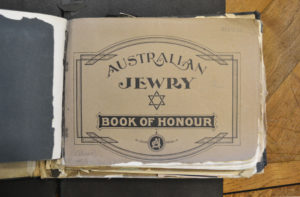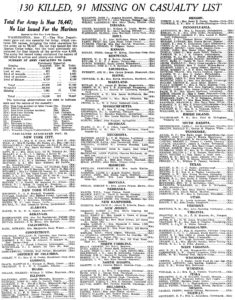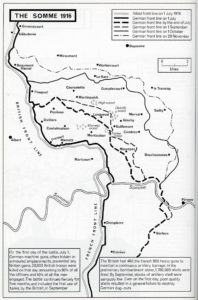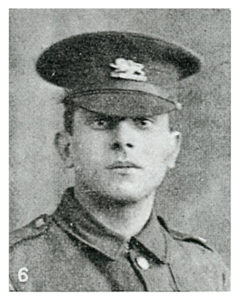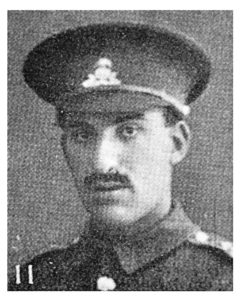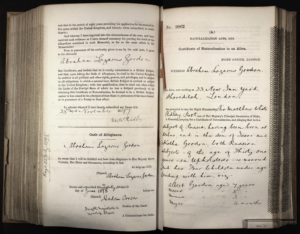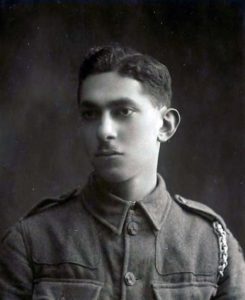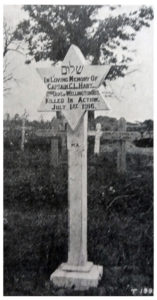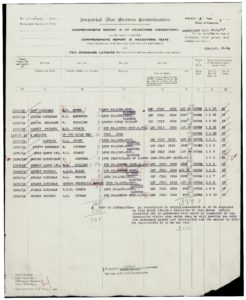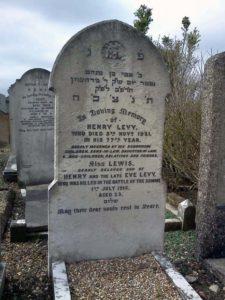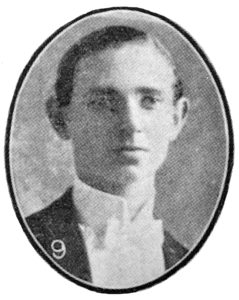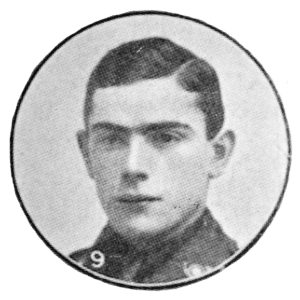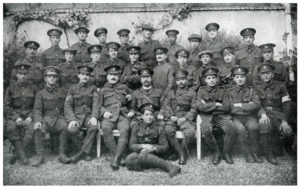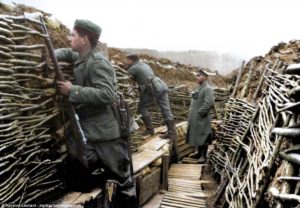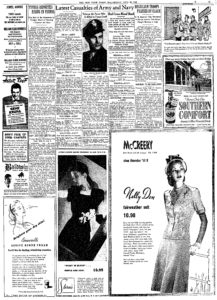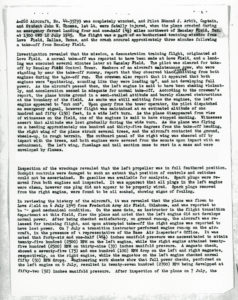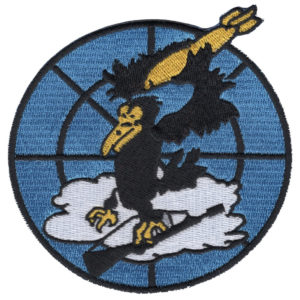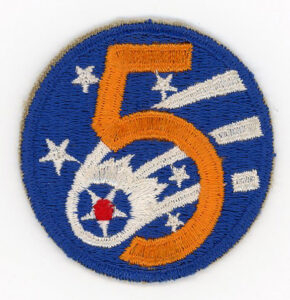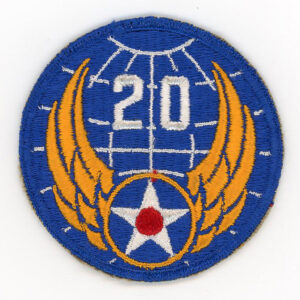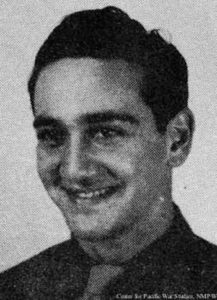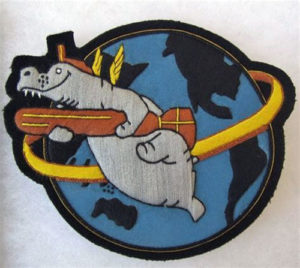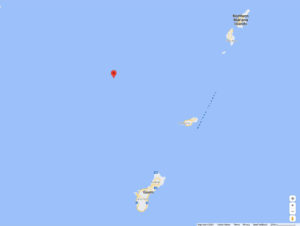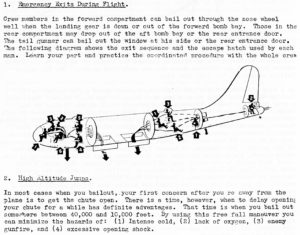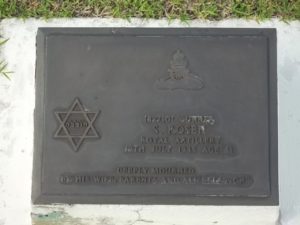Does the past want the future back?
__________
__________
To begin this post, here’s a kind of story:
Some years ago, in very much “another life”, I worked for a firm specializing in the indexing and abstracting of the contents of academic journals. Time passed. Then, I received a promotion to a newly created position, where I was tasked with editing a product providing bibliometric information for academic journals in the sciences and humanities.
I initially (- initially -) assumed that I’d be charged with responsibilities as novel as they were complex, and, be involved with interactions with customers and co-workers that – even if sometimes naturally challenging – would be a source of accomplishment. Well, that was true, but it turned out to be only partially the case. “Things” were different – far, far (did I say “far”?!) different – than what I’d assumed prior to accepting the position.
Suffice to say (but it really doesn’t suffice!) that, consistent with the nature of cubicle land, what I imagined would’ve been a steppingstone to greater levels of accomplishment turned out to be the ironic and complete opposite: Rather than being plunged into the stereotypical challenge of contending with an overwhelming, near-impossible-to-complete workload, for many months I encountered the complete opposite: I had very little to do. Sometimes, I had nothing to do.
In retrospect, my sojourn in bibliometric-world could’ve (could still?) provided raw material for cartoons in The New Yorker, episodes of The Office, or, the Amazon Prime animated series Laugh Along With Franz! (As in Kafka.)
So, I was showered with a myriad of lemons. (Paraphrasing the overused expression.)
And what do you do when you have little or nothing to do? I made lemonade. Allegorical lemonade, that is. (As goes the overused expression.)
It was starting at roughly the same time – the early 2000s – that historical information in government repositories, heretofore previously accessible only through “on site” visits or direct correspondence with archivists, was becoming freely available in digitized form through the Internet.
And so, one quiet morning, I discovered the website of the American Battle Monuments Commission. And so, one sluggish afternoon, I discovered the website of the Commonwealth War Graves Commission (CWGC). And so, one empty day, I came upon an idea: I’d use these and other websites to identify and obtain biographical information and historical records about Jewish servicemen who served in the Second World War, and, access information about other topics, most (but not all) in the realm of military history. The result years later has been the many posts – more to come! – “here”, at TheyWereSoldiers.
Though at that time I wasn’t focused on Jewish military service in World War One, I thought – in a perfunctory sort of way, simply because the information was “there” and immediately accessible – it’d be worthwhile to obtain records about Jewish soldiers who served in that war, as well. I had the vague idea that some day, somehow, I’d do something with this information, far beyond simply acquiring it.
Time passed. I decided to assemble these records and create a record of Jewish servicemen in the Allied forces in Great War, focusing on men who were casualties (killed, wounded, and missing), prisoners of war, or those who – whether casualties or not – were involved in incidents or actions that could be tied to a specific calendar date, in terms of awards and honors for military service. Having already done this for French Jewish Soldiers, German Jewish soldiers, and Italian Jewish soldiers, this entailed a focus on Jews in the armed forces of the British Commonwealth and the United States, the subject of blog posts here and here.
The primary source of information I used in this research was The Jewish Chronicle, which was accessed as 35mm microfilm (remember microfilm?) at the New York Public Library, where it was reviewed at the Library’s Dorot Jewish Division, and, in the Library’s Milstein Microform Reading Room, using mechanical (remember mechanical?) microfilm viewing machines (remember machines?!), by which I made a myriad of paper (remember paper!?) photocopies of casualty lists, news articles, editorials, letters, and some items completely unrelated to the war. In this, I reviewed all issues of the Chronicle published from early August, 1914 through mid-1919, by which late date very brief casualty lists … actually, nominal confirmation of soldiers’ killed in action status … on rare occasion appeared in that newspaper.
As to the total number of research visits I made to the Library for this and other research projects? I’ve utterly no idea; I never bothered to count. Well, it was nice walking to the Library along the streets of lower Manhattan, even if that “Manhattan” ceased to exist after 2020, and probably will not return.
____________________
The Former World: The New York Public Library, 12:30 P.M., Friday, August 26, in the year 2011.
____________________
Then, I correlated the names of soldiers listed as killed or missing, in the casualty lists carried in the Chronicle, to records in the CWGC database. These names were in turn matched to names in the British Jewry Book of Honour, the Australian Jewry Book of Honour (also accessed at the Dorot Jewish Section – their copy’s holding up pretty well, considering that in 2023 it’s a century years old!), The Sky Their Battlefield, Serving Their Country – Wartime Memories of Scottish Jews, and, other references, the ultimate goal being to tie together this information as much as possible.
____________________
Here’s the title page of Dorot’s copy of the Australian Jewry Book of Honour. Fraying around the edges, bull still intact.
____________________
If this resulting assemblage of information can be viewed as comprising as database, then the “primary key” consists of multiple data fields: a serviceman’s surname, his given name, his serial number, and (where relevant) the calendar date on which an incident occurred.
The result? Many names; many calendar dates; many serial numbers; numerous military honours; a plethora of bravery; an incalculable degree of sadness and tragedy; a continuous sense of irony.
This process wasn’t straightforward; quite the contrary.
It’s my understanding that Chronicle’s Casualty Lists, which present an adventure in ambiguity (albeit ambiguity that can be solved with effort) are based on information provided to the newspaper by Reverend Michael Adler, about whom you can read more at the Jewish Museum of London, and (naturally) Wikipedia.
Simply put, the content of the Chronicle’s lists is simple: Whether a soldier was killed, wounded, missing, a POW, or only temporarily missing, they merely comprise a soldier’s surname, the first initial (and only that letter!) of his given name, his rank, and, the name of his Regiment. Absolutely no other information appears, though commencing with the issue of July 27, 1917, the Chronicle did include a soldier’s serial number. (Did British officers have serial numbers? I don’t know. It doesn’t seem that way.)
The time lag between the appearance of a soldier’s name in the Chronicle, versus the calendar date on which he became actually became casualty, shows enormous variation. The names of some soldiers appeared in the newspaper as little as two weeks after they became casualties, while for others, months, a year, or more would transpire until the appearance of their names.
This limited amount of information sometimes made correlating a soldier’s name to CWGC records challenging, obviously a moot point for soldiers who were wounded and survived the war, for whom by definition there are no CWGC records.
In any event, the presentation of names in the Chronicle provides an interesting contrast with casualty information as available in the American news media, an example of which – published in The New York Times on November 18, 1918 – is shown below.
Note that a soldier’s full name, rank, degree of casualty status, next of kin, and residential address are fully given, or, made nominally available. However, unlike British Commonwealth soldiers, the serviceman’s serial number and military organization are not listed. Also, note that the casualty list as published in the Times encompasses the entire United States, probably because of the newspaper’s scope, prominence, and (not just physical) “size”. Though during the Second World War editors and publishers of newspapers were instructed by the War Department to limit publication of casualty information to include only casualties who resided in the immediate geographic area of a newspaper’s coverage, this seems not to have been so – for the American media – during the Great War.
(Not that I actively or actually read the Times. I haven’t done so in years. I just use it as a source historical information.)
And so, my “list” of WW I Commonwealth Jewish soldiers is largely done.
_____
Well. There are days in the history of men and nations that have particular historical significance, whether in terms of war and conflict, demographic and economic impact, cultural and social impact and legacy, the mood of a nation and people – whether of optimism or pessimism; ultimately, expressing the spirit and mood of an age. Such a day was the 1st of July in the year 1916, which marked the opening day of the Battle of the Somme (or, the “Somme Offensive”) during which the British Army suffered, “57,470 casualties … including 19,240 killed … the worst in the history of the British Army.” (From Wikipedia; see sources in list of references.)
As a symbol and example of the military service of British Jewish soldiers in the Great War, and, the significance of the Somme Offensive in general, the names and biographical information for the British Jewish soldiers fallen on July 1, 1916 (forty that I know of) are listed below. Also shown are scans of photocopies of relevant casualty lists.
One of the forty men, Rifleman Aubrey Fraser, wounded and captured on the first day of the offensive, died eight days later in the Cologne Military Hospital, Germany. Another soldier, Sergeant Leonard Nathan, severely wounded and captured, is listed as well. Born in 1888, he died at the age of 73 in 1961. He received the Military Medal.
Of the forty men, six were officers, reflective of the extremely high toll of British officers during the offensive.
Twenty-one of the forty men have no known graves, and are commemorated at the Thiepval Memorial.
Three of the forty were wounded prior to the opening day of the Somme Offensive. They were:
Rifleman Harry Goldstein – Wounded in February, 2015
Private Morris Althansen – Wounded in April, 2015
Corporal Ernest Isaac Ramus – Wounded in December of 1914, and, February of 1915
Five of the forty appear not to have been listed in the British Jewry Book of Honour. They are:
Rifleman Harry Goldstein (same man as above)
Rifleman Harold W. Marsh
Private Charles Rittenberg
Private David Rosenbloom
Rifleman Moses Schwartzburg
Among the many families that lost multiple sons during the Great War was that of Samuel and Sarah Gerber of Manchester, whose son L/Cpl. Eli Gerber was lost during the first day on the Somme. Only a little over a month earlier, on May 26 or 27, Eli’s brother “Solomon” (actually, Joe Solomon), serial 3266, a Private in the Argyll and Sutherland Highlanders (1st/8th Battalion, D Company), was killed in action. He rests at the Aubigny Communal Cemetery Extension, in Pas de Calais, France. The Gerbers were survived by seven other children: Ada, Dora, Esther, Hyman, Gertie, Jacob, and Jane.
Where available in the British Jewry Book of Honour, my list is accompanied by photographic portraits of soldiers.
But, there’s more…
The list is followed by the names of thirty-two other Jewish soldiers fallen on the same day, two in the French Army – the Armée de Terre – and thirty in the Imperial German Army – the Deutsches Heer. I have no idea if any of the German soldiers men fell in combat with British forces during the Somme Offensive. Well, given this number of men, I would suppose some did.
To better describe the historical context of this day, I’ve included links to numerous videos, while my bibliography lists a variety of websites.
_________________________
_________________________
Well, in the lives of nations as much as individual men, irony abounds.
On a major note, the first day of the Somme Offensive, the first day of July in the year 1916, was the 30th day of the month Sivan in the year 5676. That day was Saturday.
That day was Shabbat.
On a minor note, I commenced work on this post, and several other similarly-themed other posts about Jewish military casualties during the Great War (on the opening day of the German Offensive of March 21, 1918; among soldiers in the United States Army on Armistice Day, November 11, 1918; illustrating photographs of WW I soldiers from the state of Pennsylvania, and more) on the morning of February 24, 2022. I hope this doesn’t turn out to have been a case of synchronicity.
Whether in July of 1914, or the year 2023, knowledge of the future is unavailable to men. In this, there is ironic comfort. In this, there will always be the unexpected.
So, in the spirit of the old proverb (supposedly Turkish in origin, but probably universal in concept), “Measure a thousand times, and cut once.”
Is the past calling the future back?
_________________________
_________________________
From the Routledge Atlas of the First World War, this general diagram of the Somme battlefield shows the successive locations of the German front line from the commencement of the offensive in July, through late November.
This accompanying map from the Routledge Atlas provides an example of the layout and relative location of British and German trenches on the Somme. Interestingly, the Atlas’ editors have depicted trench systems located in the far northwest corner of the battlefield – which appears in the very upper left-hand corner of the above map – rather than the “center” (as it were) of the battlefield, near Montauban, Maurepas, or Longueval.
____________________
Videos
What Most People Get Wrong About the Battle of the Somme (Alan Wakefield), at Imperial War Museum (June 23, 2021)
____________________
How Many Died During The First Day Of The Somme?, at Timeline – World history Documentaries (July 10, 2021)
__________
England
There are many striking photographs of British soldiers during the Battle of the Somme, whether in preparation for the offensive, advancing towards German trenches, or after combat, with the latter category particularly including images that are evocative and haunting. However, the picture below, taken by Lieutenant Ernest Brooks and entitled “British sentry going up to his post near Beaumont Hamel. July 1916,” is especially notable – in photographic terms, that is! – in clarity, composition, and contrast. The picture really shines on levels symbolic and emotional, because of the soldier’s anonymity (his position, posture, and, backlighting by the sun, combine to make him unrecognizable), and, on a visual level at least (certainly other soldiers would have been nearby, but they don’t appear in the image), his solitude.
Though the photo in its original form is Imperial War Museum Photo Q 729, the colorized version of the image shown here, from WarHistoryOnLine, is by Marina Amaral.
_____
Casualty List published in The Jewish Chronicle on July 14, 1916
Killed: William Berson (see more below), Jack Cohen, Michael I. Freeman
Missing: Eli Gerber, Joseph Josephs, Wilfrid A. Kohn
News item about Raymond Litten; see more below…
__________
Casualty List published in The Jewish Chronicle on July 21, 1916
Killed: Michael G. Klean
Missing: Barnet Griew, Harold W. Marsh, Joseph D. Wiener, Aubrey Fraser (about whom see news item below…)
__________
Casualty List published in The Jewish Chronicle on July 28, 1916
Killed: Percival (“Percy”) Braham, Abraham Hansell, Harry Zodickson, and Aubrey Fraser (about whom see news item below…)
Missing: Joseph Tobias
__________
Casuyalty List published in The Jewish Chronicle on August 11, 1916
Killed: John Cohen, Lewis Levy
News item about Leonard Nathan; see more below…
__________
________________________________________
________________________________________
The Fallen
Saturday, July 1, 1916 – Shabbat, 30 Sivan, 5676
.ת.נ.צ.ב.ה.
Tehé Nafshó Tzrurá Bitzrór Haḥayím
May his soul be bound up in the bond of everlasting life.
Killed in Action or Died of Wounds
Abrahams, Stanley, Rifleman, 2278 (British Jewry Book of Honour lists serial as 2268)
London Regiment (Queen’s Westminster Rifles), 1st/6th Battalion
Mr. and Mrs. Joseph and Caroline Abrahams (parents), Donald (brother), 1 Riffel House, Riffel Road, Cricklewood, London, NW
Born Willesden, London, 1889
Thiepval Memorial, Somme, France – Pier and Face 13C
The Jewish Chronicle (Obituary section) 7/14/16
British Jewry Book of Honour – 77, 461
____________________
Althansen, Morris, Pvt., 3629
King’s Own (Royal Lancaster Regiment), 1st Battalion, D Company
(Wounded previously; gassed ~ 4/21/15)
Mr. and Mrs. Jacob and Millie (“Milly”) (Tropp) Althansen (parents), 47 Tower St., Mare St., Hackney, London
Also 28 Darnley Road, Hackney, London, NE
Born St. Georges in the East, Middlesex, London, 1896
Occupation: Laborer
Thiepval Memorial, Somme, France – Pier and Face 5D and 12B
The Jewish Chronicle 5/21/15, 7/28/16, 3/2/17 (TJC 5/21/15 lists name as “Althausen, M.”, and status as wounded (“gas poisoning”), TJC 7/28/16 lists name as “Althusen, M.” and status as wounded, TJC 3/2/17 lists name as “Althusen, M.” and status as missing)
British Jewry Book of Honour – 77, 239; photo section 116, 151
The below correspondence, concerning an inquiry about Pvt. Althansen’s well-being by B.N. Michelson of the United Synagogue, on behalf of the soldier’s mother Millie, was found at Ancestry.com, within “UK, British Army World War I Service Records, 1914-1920”.
United Synagogue
SAILROR’S AND SOLDIER’S DEPENDENTS COMMITTEE
Beth Hamedrash and Jewish Institute
Dear Sir
Re Pte M. Althansen 3629
M.G.S. 1st King’s Own
May I enquire on behalf of Mrs Althansen, 52 Devonshire Rd. whether anything is known of her son above. She has not heard from some considerable time.
Yours faithfully
B.N. Michelson
__________
52 Devonshire Rd.
Hackney, N.E.
2/8/16
R.L. 3629
Sir
The Rev B.N. Michelson kindly wrote for the enquirant as to my son’s state of health on the 27th ult. You sent A.F.B. 104-85 numbered to above in answer. I have since received letters which I addressed to my son. The envelopes of which I am sending you herewith. I should be glad if you can give me any further information & where I may now address him.
Yours faithfully,
Milly Althansen
This portrait of Pvt. Althansen appears in the photographic section of the British Jewry Book of Honour. Though the image as published in the book is diminutive in size (quite typical of other portraits in the monograph) it’s nonetheless of excellent quality.
____________________
Berson, William, Pvt., 18156
Essex Regiment, 13th Battalion, D Company
Mr. and Mrs. Myer and Rachel Berson (parents), Albert, Annie, Bernard, Eva, Lizzie, and Mathew (brothers and sisters)
77 North Street, Leeds
Born Yorkshire, Leeds, 1885
Cabaret-Rouge British Cemetery, Souchez, Pas de Calais, France – II,C,15
The Jewish Chronicle 7/14/16, 7/21/16
British Jewry Book of Honour – 80, 337; photo section 308
This image of Pvt. Berson’s matzeva is by FindAGrave contributor M.H. Barksdale.
On July 21, twenty days after Pvt. Berson’s death, the following tribute and news item about the soldier appeared in The Jewish Chronicle:
With reference to the death of Private A. Berson, who, as reported in our issue of the 14th inst., has been killed in action, Mr. T. Gerald Morton, the manager, at the performance on Friday at the Stratford Empire, read to the audience the following letter, which had been received from the Captain of a Company of the Essex Regiment: –
I should like to stand on the stage of the Stratford Empire and tell the people of it. Pte. Berson joined up at Stratford as anyone else, just one of the crowd. In civilian life I believe he was assistant manager at the Empire. As an infantryman in our ‘D’ Company he was a nuisance; he could not soldier somehow. He was far too sensible, too much of a gentleman to commit crime, but it was just that ‘something’ which prevented him becoming a smart soldier. When he was attached to a Trench Mortar Battery we felt somewhat relieved. He took a fancy to his new work and an interest in it – the change suited him. The night of our little ‘show’ his Battery Commander called for a volunteer. Berson was the first, arguing that as his regiment was going over the top he wished to be in it, and thought it only right that he should! He was ordered to work his gun for a certain time at ‘A,’ then move to position ‘B’. He did work his gun; he moved – but when they found him it was as a corpse, the gun in his arms, and his body covering it. His was the last body I visited to identity, and as I looked at his poor dear face and reviewed his association with ‘D’ Company, I thanked God for the example of courage and devotion to duty of the Jew.
____________________
Braham, Percival (“Percy”), Pvt., 21941
The King’s (Liverpool Regiment), 20th Battalion
Mr. and Mrs. Sampson (1868-6/17/37) and Annie / Hannah (Neiman) (1868-4/5/20) Braham (parents)
Ida, May, and Sydney (1905-3/58) (sisters and brother)
31 Madeline St., Liverpool, England
Born Toxteth Park, Lancashire, 10/98
Thiepval Memorial, Somme, France – Pier and Face 1D, 8B, and 8C
The Jewish Chronicle 7/28/16
British Jewry Book of Honour – 82, 286
Private Braham’s mother Annie’s matzeva, as seen in this Ancestry.com image from David Wilson, includes a tribute to her son, who – like so many men killed in this battle; so very many men killed during the Great War – has no grave.
Also In Affectionate Remembrance
OF HER SON PERCY,
WHO WAS KILLED IN ACTION 1ST JULY 1916
AGED 17 YEARS.
____________________
Cohen, Benjamin, Pvt., 26196
Manchester Regiment, 21st Battalion
Mr. and Mrs. Reuben and Yetta Cohen (parents), Bella, Jacob, and Miriam (sisters and brother)
146 Broughton St., Cheetham, Manchester
Born Manchester, Lancashire, 1898
Thiepval Memorial, Somme, France – Pier and Face 13A and 14C
British Jewry Book of Honour – 83, 364
____________________
Cohen, Jack, Pvt., 17176
The King’s (Liverpool Regiment), 18th Battalion, D Company
Mr. Simon Cohen (father), 109 Paddington, Liverpool
Born Middlesex, London, 1894
Danzig Alley British Cemetery, Mametz, Somme, France – VIII,U,7
The Jewish Chronicle 7/14/16
The Jewish Chronicle (Memorial notices) 9/1/16
British Jewry Book of Honour – 84, 287
The image of Pvt. Cohen’s tombstone is by FindAGrave contributor Richard Andrew Roberts.
____________________
Cohen, John, Rifleman, 5467
Rifle Brigade, 1st Battalion
Mrs. Annie Cohen (mother)
Isaac, Rebecca, Reuben, and Solomon (brothers and sister), 86 Boundary St., Shoreditch, NE, London
Thiepval Memorial, Somme, France – Pier and Face 16B and 16C
The Jewish Chronicle 8/11/16
British Jewry Book of Honour – 84,382
____________________
Davis, Harry, Company Sergeant Major, 4827
East Yorkshire Regiment, 1st Battalion
Mrs. Kate Davis (wife) (died 5/6/08), Lilian Madeline Davis (daughter) (born 7/20/07)
Esther Elizabeth Benjamin (guardian), 6 St. Gabriel’s Place, Cricklewood, London
Mr. and Mrs. Charles and Kate Davis (parents), S.M. Benjamin and Lillie Davis (sisters), 12 Soho St., Soho Square, London, NW
Also 6 St. Gabriel Road, London, NW
Born 1877
Gordon Dump Cemetery, Ovillers-la-Boisselle, Somme, France – X,B,5
The Jewish Chronicle 8/25/16
The Jewish Chronicle (Obituary section) 8/11/16
British Jewry Book of Honour – 83, 302
____________________
Inscription on matzeva: Far from home he is laid to rest – What God ordains is for the best
Freeman, Michael Isaac, Pvt., 15579
Highland Light Infantry, 17th Battalion
Mr. and Mrs. Abraham Simon (1847-1907) and Rhoda Yetta (Summ) (1854-1937) Freeman (parents)
Alexander, Eli (Ellis), Harry, Joseph, and Louis C. (brothers)
51 (or # 7 ?) Avoca St., Belfast, Ireland
Born Latvia, 1881
Bouzincourt Communal Cemetery Extension, Somme, France – II,B,7
The Jewish Chronicle 7/14/16
The Jewish Chronicle (Obituary section) 6/27/19
British Jewry Book of Honour – 90, 375; photo section 164
____________________
Gerber, Eli, L/Cpl., 18620
Lancashire Fusiliers, 19th Battalion, D Company
Mr. and Mrs. Samuel (1861-1919) and Sarah (3/16/68-1/43) Gerber (parents)
Pvt. Joe Solomon Gerber (brother), Ada, Dora, Esther, Hyman, Gertie, Jacob, and Jane Gerber (sisters and brothers)
16 Whitfield St., Cheetham, Manchester
Born Prestwich, 4/91
Thiepval Memorial, Somme, France – Pier and Face 3C and 3D
The Jewish Chronicle 7/14/16, 2/15/18
British Jewry Book of Honour – 91, 308; photo section 244
FindAGrave contributor Bob the Greenacre Cat took this photo of the matzeva of Samuel Gerber, L/Cpl. Gerber’s father. The English-language text engraved on the lower part of the matzeva appears below the photo…
In Loving Memory of
SAMUEL GERBER
WHO DIED NOV 16TH 1919
AGED 60 YEARS
DEEPLY MOURNED BY HIS SORROWING
WIFE & CHILDREN
ALSO L CPL ELI GERBER
KILLED IN ACTION IN FRANCE JULY 1ST 1916
AGED 25 YEARS
ALSO PTE SOLOMON GERBER
DIED OF WOUNDS IN FRANCE MAY 26TH 1916
AGED 24 YEARS
A member of D Company, 1st/18th Battalion, Argyll and Sutherland Highlanders, Pvt. Joe Solomon Gerber (3266), born in 1894, is buried at the Aubigny Communal Cemetery Extension, Pas de Calais, France (I,C,39). His name appeared in a casualty list published in The Jewish Chronicle on June 23, 1916, and can be found on pages 91 and 379 of the British Jewry Book of Honour. Though his father’s matzeva lists his date of death as May 26, 1916, the Commonwealth War Graves Commission lists the date as May 27.
As can be seen above, Samuel died just over one year after the war’s end.
____________________
Gilbert, Sidney, L/Cpl., 4421
London Regiment (Royal Fusiliers), 2nd Battalion
Mrs. Annie Gilbert (mother), Pvt. Louis Gilbert (serial 3596) (brother), 7 High St., Stepney, E, London / 46 Crispin St., Spitalfields, London
Also 21 Hawking St., London, E
Gommecourt British Cemetery No. 2, Hebuterne, Pas de Calais, France – III,G,3
The Jewish Chronicle 8/4/16
British Jewry Book of Honour – 91, 469; photo section 262
____________________
Goldstein, Harry, Pvt., 5107
Rifle Brigade, 2nd Battalion
(Wounded in Action previously; approximately 2/19/15)
Mr. and Mrs. John B. and Helen Poke (uncle and aunt)
Born Spitalfields, Middlesex
Thiepval Memorial, Somme, France – Pier and Face 16B and 16C
The Jewish Chronicle 3/19/15
British Jewry Book of Honour – Not Listed
____________________
Gordon, Myer, Rifleman, 301364 (serial also 2520)
London Regiment (London Rifle Brigade), 1st/5th Battalion
Mr. and Mrs. Abraham Lazarus and Judith Gordon (parents), 16 Marine Ave., Westcliff-on-Sea, Essex
Albert, Cecil, Francis, Minnie, and Moss (brothers and sisters), 186 Dalston Lane, London, NE
Born Shoreditch, London, 1897
Thiepval Memorial, Somme, France – Pier and Face 9D
The Jewish Chronicle 2/22/18
British Jewry Book of Honour – 93, 469
Myer Gordon’s name appears in “UK, Naturalisation Certificates and Declarations, 1870-1916” at Ancestry.com, where (at the age of four months, on June 22, 1898), it was recorded by his father, Abraham Lazarus, along with the names of his brothers Albert and Moses (“Moss”?), and sister Minnie (“Minna”).
____________________
Griew, Barnet, Rifleman, 300863 (serial also listed as #1398)
London Regiment (London Rifle Brigade), 1st/5th Battalion
Mr. and Mrs. Solomon and Rebecca Griew (parents) (surname was originally “Grenvitsky” or “Grewvitsky”)
Alice, David, Fanny, Harry, Joseph, and Maurice (sisters and brothers)
171 Amherst Road, London, N
Born St. John at Hackney, London, 1897
Thiepval Memorial, Somme, France – Pier and Face 9D
The Jewish Chronicle 7/21/16, 2/22/18
British Jewry Book of Honour – 94, 469
An excellent portrait of Rifleman Griew, by FindAGrave Contributor Nancy Wright.
____________________
Hansell, Abraham, Pvt., 9444
Manchester Regiment, 17th Battalion
Mr. and Mrs. Mark (1864-6/29) and Paulina (born 1866) Hansell (parents)
Esther and Joseph (sister and brother), Fanny, Jacob, and Rachel (half-sisters and half-brother)
27 Brunswick St., Cheetham, Manchester
Born Manchester, Lancashire, 1895
Thiepval Memorial, Somme, France – Pier and Face 13A and 14C
The Jewish Chronicle 7/28/16
British Jewry Book of Honour – 94,365
____________________
Hart, Cecil Lyon, Captain
Duke of Wellington’s (West Riding Regiment), 3rd Battalion
Mr. and Mrs. Moss Alexander and Marguerite Hart (parents), Reni Victoria and Netta Adelaide Hart (sisters)
12 Alexandra Mansions, London, NW
Born Kimberly, South Africa, 1889
Sucrerie Military Cemetery, Colincamp, Somme, France – I,H,10
The Jewish Chronicle (Obituary section) 7/7/16, 7/5/18, 7/4/19
British Jewry Book of Honour – 71, 176; photo section 362
Like the above portrait of Pvt. Althansen, this image of Capt. Hart is also from the British Jewry Book of Honour.
This image of Capt. Hart’s matzeva, which also appears in the British Jewry Book of Honour (albeit there of lesser photographic quality than “this” web image) is from Capt. Hart’s biographical profile at British Jews in the First World War.
____________________
Hart, Samuel, Rifleman, 300116 (serial previously #9521)
London Regiment (London Rifle Brigade), 1st/5th Battalion
Mr. and Mrs. Emanuel and Matilda Hart (parents), Elizabeth Marion, Joseph, Myer, and Rebecca (sisters and brothers)
19 Anson Road, Cricklewood, London, NW2
Born Hackney, London, 1895
Thiepval Memorial, Somme, France – Pier and Face 9D
British Jewry Book of Honour – 95, 471; photo section 293
Also in the British Jewry Book of Honour is this portrait of Rifleman Hart.
____________________
Isaacs, Alexander, Pvt., 5835
London Regiment (London Scottish), 1st/14th Battalion
Mr. Lewis Isaacs (father), 34 Tottenham Court, London, W
Born London
Thiepval Memorial, Somme, France – Pier and Face 9C and 13C
The Jewish Chronicle 2/22/18
British Jewry Book of Honour – 94, 473
____________________
Josephs, Joseph (Avraham Yosef ben David), 2nd Lieutenant
London Regiment (The Rangers), 1st/12th Battalion
Mr. and Mrs. David and Sabina Josephs (parents), 206 Willesden Lane, NW, London
Address also 72 Highbury New Park, London, N
Born 1897
Gommecourt British Cemetery No. 2, Hebuterne, Pas de Calais, France – I,C,4
The Jewish Chronicle 7/14/16, 6/29/17
British Jewry Book of Honour – 72, 459
Lt. Josephs’ portrait at FindAGrave, uploaded by Contributor Nancy Wright, is Imperial War Museum photo IWM HU 116509…
While at the Commonwealth War Graves Commission, Lt. Josephs’ name appears as entry 44, with the notation, “For particulars of layout inscription etcetera see schedule PC.”…
…and at the bottom of the form appear the instructions:
NOTE TO CONTRACTOR: – An inscription in Hebrew characters is to be engraved on this Stone (No. 54.) execution of this Stone should therefore not be proceeded with until an Inspector of the Commission visits your works when he will provide you with the necessary Layout and Inscription and the manner in which the Inscription is to be set out.
Moving over a century forward, two images of Lt. Josephs’ matzeva, taken by his great niece Lola Fraser, appear at British Jews in the First World War. Notice the phrase, “BELIEVED TO BE” engraved at the top of the stone.
This first image is an overall view of the stone…
 …while a close-up of the above-mentioned Hebrew inscription appears below.
…while a close-up of the above-mentioned Hebrew inscription appears below.
The first line is Josephs’ Hebrew name, Avraham Yosef ben David, while the lower line is ה’ נתן וה’ לקח, יהי שם ה’ מבורך, the English-language translation being, “The Lord giveth, the Lord taketh away, blessed be the name of the Lord”, taken from Job 1:21, another translation being, “The Lord gave and the Lord took; may the name of the Lord be blessed.” (Special thanks to Ari Dale for the translation! – Thanks, Ari!)
Though tombstones provided by the Commonwealth War Graves Commission conform to strict requirements of size, design, composition and color, and, the amount (total number of characters) of text engraved on the stone, it is notable that the CWGC does provide allowance for textual characters other than English, an example paralleling that of Lt. Josephs’ being the matzeva of WW II Canadian Sergeant Samuel Moses Hurwitz.
____________________
Inscription on matzeva: In loving memory – Of our dear Michael
Klean, Michael Graham, 2nd Lieutenant
Northumberland Fusiliers, 16th Battalion
Mr. and Mrs. Simeon and Lenora (“Leonora”?) Klean (parents), 26 Hatton Garden, London, EC
Elsie and Bluebell (sisters), 8 Golder’s Green Crescent, Golder’s Green, London, NW
Born Middlesex, London, 1878
Lonsdale Cemetery, Authuile, Somme, France – IV,T,1
The Jewish Chronicle 7/21/16, 7/28/16
The Jewish Chronicle (Obituary section) 7/21/16
British Jewry Book of Honour – 72, 241; photo section 42
____________________
Kohn, Wilfrid Arthur, 2nd Lieutenant
East Lancashire Regiment, 11th Battalion
Mr. and Mrs. Arthur and Rose C. Kohn (parents), Madelene D. Cohn (sister), 79 Queen’s Gate, South Kensington, London, SW
Born Kensington, London, 1892
Euston Road Cemetery, Colincamps, Somme, France – I,D,13
The Jewish Chronicle 7/14/16
British Jewry Book of Honour – 72, 320
____________________
Lapinski, Albert, Pvt., 16400 (served as “Lappin”)
Royal Fusiliers, 20th Battalion
Mr. and Mrs. David (1863-5/22/33) and Rebecca (Grossmith) (1866-4/16) Lapinski (parents)
18 Osbaldeston Road, Stoke Newington / 44 Colvestone Crescent, Dalston, London, NE
Esther, Jacob, Leah, and Pearl (sisters and brother)
Born Middlesex, London, 1897
Danzig Alley British Cemetery, Mametz, Somme, France – VIII,T,1 (Crucifix on matzeva)
The Jewish Chronicle 8/4/16
The Jewish Chronicle (Obituary section) 8/11/16
British Jewry Book of Honour – 101, 237; photo section 122
____________________
Lazarus, Raphael (Ralph), Pvt., 5851
Lincolnshire Regiment, 2nd Battalion
Mrs. Maggie May (Clifford) “Margaret” Lazarus (wife) (9/87-1947), Miriam and Mildred “Millie” Marie (daughters)
Mr. and Mrs. Lasser (1944-11/27/12) and Rose (Trauslitier) (1859-10/18/32) Lazarus (parents), Hannah, Harry, Joseph, Joshua, Moses, and Rebecca (sisters and brothers)
Born Whitechapel, Middlesex, 3/83
Thiepval Memorial, Somme, France – Pier and Face 1C
British Jewry Book of Honour – 293 (Not specifically listed in British Jewry Book of Honour – Roll of Honour)
____________________
Levy, Harold, L/Cpl., 12086
Devonshire Regiment, 9th Battalion
Mrs. Elsie Levy (mother), 1 Gwy Cliffe Cottages, Oakleigh Road, Whetstone, London
Born London
Devonshire Cemetery, Mametz, Somme, France – B,1
The Jewish Chronicle 11/17/16
British Jewry Book of Honour – 104, 294; photo section 270
L/Cpl. Levy is buried immediately alongside six comrades, as seen in the below FindAGrave image by chris(tine) eaton. Of this group of seven soldiers, six – all killed during the first day of the Somme Offensive – are from the Devonshire Regiment.
Wright, D., Serjeant, 20496 (November 10, 1916) “B” Battery, 92nd Brigade, Royal Field Artillery
Brown, Harry, Pvt., 3/7239, 9th Battalion, Devonshire Regiment
Down, John Thomas, Pvt., 20876, 9th Battalion, Devonshire Regiment
Gough, W.H., Pvt., 10501, 8th Battalion, Devonshire Regiment
Harwood, A.E.J., Pvt., 12185, 9th Battalion, Devonshire Regiment
Dunn, W.J., Pvt., 16497, 8th Battalion, Devonshire Regiment
____________________
Inscription on matzeva: Nobly he answered – His duty’s call
Levy, Lewis, Pvt., 18418
Hampshire Regiment, 1st Battalion
Mrs. Sarah (Springer) Levy (wife), Henry and Evie (children), 104 Eric St., Mile End Road, London
Mr. and Mrs. Henry (11/28/44-11/5/21) and Mary Ann Eva / Eve (Griffin) (1850-3/11) Levy (parents)
Rebecca (sister), 132 Bridge St., Bow, London, E3
Born Bethnal Green, London, 1892
Bertrancourt Military Cemetery, Somme, France – Plot I, Row G, Grave 13
The Jewish Chronicle 8/11/16
The Jewish Chronicle (Obituary section) 7/14/16
British Jewry Book of Honour – 104, 329
Akin to other soldiers listed in this post, Pvt. Levy has no grave. His name and memory are commemorated on the matzeva of his father Henry, as seen in this Ancestry.com photo at the “Marquis French Family Tree”, by RCTreeby.
Also LEWIS,
DEARLY BELOVED SON OF
HENRY AND THE LATE EVE LEVY,
WHO WAS KILLED IN THE BATTLE OF THE SOMME
1ST JULY 1916
AGED 23.
שָׁלוֹם
____________________
Inscription on matzeva: All you had hoped for – All you had you gave – To save mankind
Litten, Raymond, Captain
Royal Berkshire Regiment, 6th Battalion, B Company
“He was killed in action … at the head of his Company (‘B’) within the first hour, in the first wave of the attack.”
Mr. and Mrs. Tobias Raphael and Frances Litten (parents), Adelaide D., Edith Miranda, Hilda, Maude, and Violet (sisters)
21 Pembridge Villas, Notting Hill, London, W
Born Kensington, London, 8/83
Carnoy Military Cemetery, Somme, France – Q,19
The Jewish Chronicle (biography) 7/14/16
The Jewish Chronicle (Obituary section) 7/7/16
British Jewry Book of Honour – 73, 343
From FindAGrave:
He was Killed In Action on the 1st.July 1916, (First Day of The Battle of The Somme) Aged 32, at the head of his Company (‘B’) within the first hour, in the first wave of the attack. Seven brother officers of the 6th.Btn. died this day with six buried in a row together in Carnoy cemetery, the seventh is commemorated on the Thiepval Memorial to the missing.
From The Jewish Chronicle:
Capt. Raymond Litten, of the Royal Berkshire Regiment, who was killed in action on July 1st, was the only son of the late Mr. Tobias Raphael Litten and of Mrs. Litten, of 21, Pembridge Villas. Capt. Litten was born in August, 1883, and was educated at the City of London School. He joined the Inns of Court Officers Training Corps on August 3rd, 1914, and received his commission six weeks later. He went in the front in July, 1915, and was enrolled a Freeman of the City of London on December 15th last. He was a member of the Stock Exchange. A photograph of Capt. Litten is printed in the current issue of the Jewish World.
Lt. that of like Josephs’, Captai Litten’s portrait at FindAGrave, uploaded by Contributor laurinlaurinespie, is an Imperial War Museum photo, in this case IWM HU 124199…
…while this portrait of Capt. Litten is c/o FindAGrave Contributor Jofen
And so, here is an image of his matzeva, by FindAGrave Contributor Jofen
____________________
Marcus, Dudley Harold, Rifleman, 470364 (British Jewry Book of Honour lists serial as 2216)
London Regiment (The Rangers), 12th Battalion
Mr. and Mrs. Julius (4/2/44-6/30/13) and Ida Selma (Koppel) (3/3/53-8/14/03) Marcus (parents)
Emily Walter, Evelyn J., Gladys F., and Rudolph B. Marcus (sisters and brother)
76 Melrose Ave., Cricklewood, London, NW
Born Hampstead, London, 4/95
Gommecourt British Cemetery No. 2, Hebuterne, Pas de Calais, France – I,A,21
The Jewish Chronicle 5/11/17
The Jewish Chronicle (Obituary section) 5/18/17
British Jewry Book of Honour – 107, 480
____________________
Marsh, Harold William, Rifleman, 30162
London Regiment (London Rifle Brigade), 1st/5th Battalion
Mr. and Mrs. Elijah (12/2/73-11/8/51) and Emily Harriett (Cusack) (born 4/9/73) Marsh (parents), Bertram G. and Thomas L. Marsh (brothers)
6 Woodland Road, Loughton, Essex
Born Dalston, London, 1898
Thiepval Memorial, France – Pier and Face 9D
The Jewish Chronicle 7/21/16
The Jewish Chronicle (Obituary section) 3/28/19
British Jewry Book of Honour – Not Listed (Baptised 9/25/98 at Dalston, St. Mark, England)
The Jewish Chronicle lists name as “Marsh, H.W.”, and serial as 2505, while CWGC lists secondary serial as 3505
____________________
Polakoff, Jacob, Rifleman, S/15089
Rifle Brigade, 2nd Battalion
Mr. and Mrs. Morris and Leah Polakoff (parents), Esther, Gershon, Herman, Marks, and Samuel (sister and brothers)
41 Osbaldeston Road, Stoke Newington, London, N
Born 1894
Thiepval Memorial, Somme, France – Pier and Face 16B and 16C
The Jewish Chronicle 10/19/17
British Jewry Book of Honour – 112, 361; photo section 63
The following documents, at from “UK, British Army World War I Service Records, 1914-1920” at Ancestry.com, pertain to his mother’s inquiry about the disposition of her son’s possessions (a silver cigarette case, a pipe with gold rim, a tobacco pouch, an illuminated wrist-watch, and a bone knife), which I would think were gifts from his family. No information would ever be forthcoming about these items, but then again, perhaps no information could ever be forthcoming, for his body was never identified.
The following articles were with Rfn. J. Polakoff when he was killed, but have not yet been received: –
Silver cigarette case.
Briar pipe with gold rim.
Tobacco pouch.
Illuminated wrist-watch,
And bone knife.
Yours Truly
L Polakoff
Replied no further effects
4-12-17
__________
J. Polakoff
S/15089 Rfn.
2nd Batt R B
1 pipe
1 5 photo’s
1 regulation Ca[p?]
____________________
Ramus, Ernest Isaac, Cpl., 1599
London Regiment (Queen Victoria’s Rifles), 1st/9th Battalion
(Seriously wounded previously; approximately 12/29/14)
(Wounded previously; approximately 2/19/15)
Mr. and Mrs. Jacob Alfred (12/27/58-3/47) and Esther (Bloomfield) (3/62-6/36) Ramus (parents)
Arthur N., Elizabeth Leah, Norman J., Sidney A., and Stanley L. Ramus (brothers and sister)
23 Park Drive, Harrogate, North Yorkshire
Born Hendon, Middlesex, 7/91
Thiepval Memorial, Somme, France – Pier and Face 9C
The Jewish Chronicle 3/19/15, 7/21/16
The Jewish Chronicle (Obituary section) 7/28/16
British Jewry Book of Honour – 113, 484
____________________
Rittenberg, Charles, Pvt., 5791
Machine Gun Corps, 107th Company
Mrs. Edith (Connor) Rittenberg (wife), Charles Jr. (son; born 1909)
19 Guthrie St., Upper Baker St., Liverpool
Jacob and Harriet Rittenberg (parents), Clara and Leah (sisters)
Born West Derby, Liverpool, Lancashire, 1886
Thiepval Memorial, Somme, France – Pier and Face 5C and 12C
British Jewry Book of Honour – (Married 7/4/09 at Church of Saint Philip)
____________________
Rosenberg, Harry, Pvt., 10640
Duke of Wellington’s (West Riding Regiment), 2nd Battalion
Mr. and Mrs. Barnett Louis and Jane Ross (parents), 18 Preston St., Roundhay Road, Leeds
Also 13 Lovell Road, Leeds
Born Yorkshire, 1897
Thiepval Memorial, France – Pier and Face 6A and 6B
The Jewish Chronicle 6/8/17
British Jewry Book of Honour – 114, 325
Served as “Ross, Harry”. Listed in British Jewry Book of Honour – and The Jewish Chronicle as “Ross, H.”
____________________
Rosenbloom, David, Pvt., 19263
Welch Regiment, 9th Battalion
Mrs. Leah (Rosenbloom) Goldenberg (mother), 7 St. Jame’s Churchyard, Bristol
Born 1895
Thiepval Memorial, Somme, France – Pier and Face 7A and 10A
British Jewry Book of Honour – Not Listed
____________________
Inscription on matzeva: Sadly missed – By his dear mother – Brother, sisters – And all relatives
Rosenthal, Maurice, Pvt., 27547
Lancashire Fusiliers, 15th Battalion, C Company
Mr. and Mrs. Simon (1857-1899 or 1901) and Betsy (born 1860) Rosenthal (parents), Jacob, Jane, Kate, Mathilda, Sarah, and Yetta (brother and sisters)
41 Exchange St., Manchester
Born Manchester, Lancashire, 1889
Connaught Cemetery, Thiepval, Somme, France – II,G,9
The Jewish Chronicle 1/12/17
British Jewry Book of Honour – 115, 309
FindAGrave Contributor “geoffrey gillon” took this photo of Pvt. Rosenthal’s matzeva.
____________________
Schwartzburg, Moses, Rifleman, 471204
London Regiment (The Rangers), 1st/12th Battalion
Mrs. Louisa (Holliday) Schwartzburg (wife; married 7/26/14), Maurice Leon (son) (born 1/14/15)
57 Rawstone St., St. John’s, Clerkenwell EC, London
Mrs. Charlotte Schwartzburg (mother), Joseph (brother)
Born Clerkenwell, London, 1890
Thiepval Memorial, Somme, France – Pier and Face 9C
British Jewry Book of Honour – Not Listed
____________________
Telfer, Henry Adam, Lieutenant
King’s Own Yorkshire Light Infantry, 9th Battalion (attached to 64th Trench Mortar Battery)
Mr. and Mrs. William Telfer and Catherine (“Florrie”) Leviansky (parents), 90 & 91 Queen St., London
Lt. Claude William Telfer (brother), 16 Belsize Park, London, NW25
Born 1893
Gordon Dump Cemetery, Ovillers-la-Boisselle, Somme, France – II,N,9
The Jewish Chronicle (Obituary section) 7/14/16
British Jewry Book of Honour – 75, 346; photo section 44
____________________
Inscription on matzeva: The Lord gave the Lord hath taken – Blessed be – The name of the Lord
Tobias, Joseph, Rifleman, B/397
Rifle Brigade, 1st Battalion
Father Isaac; Mr. and Mrs. Morris and Rebecca Cohen (step-parents), Benjamin (step-brother), Hyman (brother)
6 Elsie House, Philip St. (Backchurch Lane East), Commercial Road, London, E
Born Liverpool, Lancashire, 1896
Redan Ridge Cemetery No. 1, Beaumont-Hamel, Somme, France – A,18
The Jewish Chronicle 7/28/16, 2/15/18
British Jewry Book of Honour – 121, 387; photo section 164
____________________
Weiner, Joseph Davis, Rifleman, 301649 (or 2538)
London Regiment (London Rifle Brigade), 1st/5th Battalion
Mr. and Mrs. Davis (1865-6/27) and Jane (1867-6/28) Weiner (parents)
Abraham, Barbara, Bertha, Sybil / Sarah (brother and sisters)
25 Spital Square, London, E
Born London, 1899
Thiepval Memorial, Somme, France – Pier and Face 9D
The Jewish Chronicle 7/21/16, 2/28/19
British Jewry Book of Honour – 123, 489
____________________
Zodickson, Harry, Pvt., 11057
The King’s (Liverpool) Regiment, 18th Battalion
11 Southampton St., Firtzroy Square, London, W
Mrs. Hyman Zodickson (father), Abram, Charles, Louis, Max, Moses, Myer, Sammy, and Sarah (brothers and sisters)
Born Russia, 1896
Danzig Alley British Cemetery, Mametz, Somme, France – IV,S,8
The Jewish Chronicle 7/28/16
British Jewry Book of Honour – 124, 291
Prisoner of War: Died of Wounds
Fraser, Aubrey, Rifleman, 2818
London Regiment (London Rifle Brigade), 5th Battalion
Prisoner of War; Died of wounds 7/9/16 at Cologne Military Hospital, Germany
Mr. and Mrs. Israel (9/26/69-12/26/41) and Fanny (Featherman) (6/14/71-1/19/46) Fraser (parents)
1-4 Argyll Place, Regent St., London, W1
Beatrice, Edna, Joseph, and Joshua (sisters and brothers)
96 Maide Vale, London, W
Born Manchester, Lancashire, 1898
Deutz Jewish Cemetery, Cologne, Germany – Grave 1660
The Jewish Chronicle 7/21/16, 7/28/16
The Jewish Chronicle (Obituary section) 7/28/16, 7/4/19
British Jewry Book of Honour – 89, 468
The following news item, about Pvt. Fraser’s death in Germany as a wounded prisoner of war, appeared in The Jewish Chronicle on July 28, 1916. Though I cannot cite specifics (as I type this blog post!), I believe that the Chronicle, at least in the early part of the Great War, did on occasion publish transcripts of communications from Jewish religious leaders in Germany, and, brief articles touching upon Jewish life in that country.
THE LATE RIFLEMAN AUBREY FRASER
TOUCHING LETTER FROM A GERMAN RABBINER.
Rifleman Aubrey Fraser (the second son of Mr. I. Fraser, member of the Board of Management of the St. John’s Wood Synagogue, and Mrs. Fraser) who was reported wounded and missing in our last issue died from the effects of his wounds on July 9th.
Mr. Fraser has received the following letter, in German, from Rabbi Dr. Ludwig Rosenthal, of Cologne.
Dear Sir, – It is my sad duty to inform you that your son Aubrey, of the London Rifle Brigade, who was brought here severely wounded and taken to the hospital succumbed to his wounds on the 9th July. I was with him at the time of his death, 2 a.m., and the last conscious words of your dying son were of his father and mother. A religious service was held in the hospital, after which he was interned in the Jewish cemetery. Full military honours were accorded him. May God comfort you and endow you with strength to submit to the words recited by me at the burial: “The Lord gave and the Lord hath taken away; Blessed be the name of the Lord.”
Prisoner of War: Severely Wounded; Survived
Information about Commonwealth and French Jewish prisoners of war of the First World War in German captivity (not Jewish POWs from the Central Powers in Allied captivity!) is scanty, but does exist. One such soldier was Sergeant Leonard Nathan, who was awarded the Military Medal, probably and specifically for his actions during the Somme Battle. Very badly wounded, missing, and later determined to have been captured, Sgt. Nathan survived, to return to his family.
Nathan, Leonard, Sgt., 390263, Military Medal
Queen Victoria’s Rifles
Prisoner of War
Seriously wounded in action: “Gunshot wound face, cranium, ear, blind eye”.
Mr. and Mrs. Frederick (4/29/58-9/33) and Sarah (Jacobs) Nathan (born 1964 (parents), 73 Fountain Road, Edgbaston, Birmingham
Reuben and Violet (brother and sister); Sergeant Major M. Nathan (uncle)
Born Warwickshire, Birmingham, 9/20/88; Died March, 1961, Warwickshire, Birmingham
The Jewish Chronicle 8/11/16
British Jewry Book of Honour – Not Listed
Though Sgt. Nathan’s name didn’t appear in any casualty list published in the Chronicle, that newspaper did publish this news item on August 11, 1916:
“Mr. and Mrs. F. Nathan, of Edgbaston, Birmingham, have just heard from their son, Sergt. Leonard Nathan, Q.V.R.s. He has been missing since July 1st. He was badly wounded and a prisoner of war in a German Hospital, where he is being well treated and doing well. Sergt. Nathan has received a note from the Divisional General complimenting him in his work with his machine gun team and informing him that he was awarded the Military Medal for his distinguished conduct. He went out with the attackers into the German lines and fought his gun until it was put out of action when he found a Lewis gun and worked that for three quarters of an hour until he was wounded and captured. We are indebted to Sergt.-Major M. Nathan, the boy’s uncle, for the interesting information.”
The following Fold3.com documents, in Sgt. Nathan’s Pension Ledger, attest to the grievous nature of his wounds. His injuries comprised a gunshot wound to the face, cranium, and ear, and blindness in one eye. On December 7, 1922, at the age of 34, he was categorized as being 70% disabled, and awarded 24 1/3 (weekly?) for the rest of his life, commencing retroactive to January 29, 1919.
While the Great War ended for Sgt. Nathan on July 1, 1916, his own war never really ended.
____________________
From the British Jewry Book of Honour (page 116 in the Photographs Section, to be specific!), this image is entitled “On active Service: Rev. Michael Adler, S.C.F., and group, Rouen, May 19, 1915”. Particularly relevant for this post is the fact that the image includes two soldiers mentioned above.
In the back row, Sergeant Leonard Nathan, MM, is fourth from left.
In the middle row, Pvt. Morris Althausen is eighth from left.
The men’s names are listed below the photo.
Back Row
Schweitzer, S., Driver, Army Service Corps
Levy, L., Pvt., Manchester Regiment, 2nd Battalion
Spero, J., Pvt., Army Service Corps
Nathan, L., Sgt., Military Medal, Queen Victoria’s Rifles
Hepstone, J., Pvt. – Killed in Action (Actually, Pvt. Julius Epstein, 11508, King’s Own Royal Lancaster Regiment, 1st Battalion (Gassed ~ 4/21/15; died of effects of gas 6/7/15, Commemorated at Ypres (Menin Gate) Memorial, Ieper, West-Vlaanderen, Belgium – Panel 12 (The Jewish Chronicle 5/21/15, 5/28/15, 6/25/15))
Abrahams, J., Pvt., Indian Veterinary Corps
Goldman, A., Pvt., West Riding Regiment, 2nd Battalion
Cohen, D., Rifleman, London Regiment, 12th Battalion
Carlish, A., Pvt., Army Service Corps
Middle Row
Hershman, J., Driver, Army Service Corps
Lessman, S., Pvt., London Regiment, 3rd Battalion
Spicker, F., Pvt., Army Service Corps
Friedlander, R., Pvt., London Regiment, 7th Battalion
Needle, M., Pvt., Army Service Corps
Goodman, R., Pvt., Royal Army Medical Corps
Gavson, M., Pvt., Army Service Corps
Althausen (incorrectly listed as “Althusen”), M., King’s Own Royal Lancaster Regiment, 1st Battalion, KIA
Levy, M., Pvt., Army Service Corps
Lyons, B., L/Cpl., West Yorks Regiment, 1st Battalion
Front Row
Blush, L., Pvt., Army Service Corps
Bernstock, J.H., Pvt., London Regiment, 4th Battalion
Harris, J., Sgt., Cyclist Corps
Polack, M.M., Sgt., Army Service Corps
Adler, Michael, Reverend, Senior Chaplain to the Forces
Joseph, M., Capt., Indian Pay Corps
Salmon, B., Pvt., Army Service Corps
Simmons, R., Pvt., Royal Army Medical Corps
Goldstuck, N., Pvt., Royal Army Medical Corps
Constad, H., Pvt., Army Service Corps
________________________________________
________________________________________
France
French Army – Armée de Terre
From the April 14, 1916 issue of l’Univers Israelite, this image shows a group of Jewish Zouaves at Verdun.
____________________
Note that Caporal Heller served in the Foreign Legion, and Soldat Rigal, though not listed in Les Israelites dans l’Armée Française, was born in Warsaw.
.ת.נ.צ.ב.ה.
Tehé Nafshó Tzrurá Bitzrór Haḥayím
Heller, Marcel, Caporal, 19595
Infanterie, 219eme Regiment d’Infanterie
Killed by the enemy (Tué a l’ennemi) at Foucaucourt, Somme
Born 8/7/84, 9eme Arrondissement, Paris, France
Les Israelites dans l’Armée Française – 42
____________________
Rigal, Schoel, Soldat de 2eme Classe, 23787
Infanterie, Légion étrangère, Regiment de Marche de la Legion Etranger (“En subsistance au 22eme Regiment d’Infanterie”)
Killed by the enemy (Tué a l’ennemi) at l’Eclusier, Somme
Born 6/1/94, Varsovie (Warsaw), Pologne
Les Israelites dans l’Armée Française – Not Listed
________________________________________
________________________________________
Germany
Imperial German Army – Deutsches Heer
This image, originally from Media Drum Images.com, is via News24.blogspot, and is captioned as showing, “German trenches on the Somme front line”. The image was colorized by Royston Leonard.
A list of Jewish military casualties in the Imperial Germany Army on July 1, 1916, follows below.
The names of 30 men, all of whom presumably were killed in action or died of wounds, are listed, while a 31st, Hauptmann (Captain) Alfred Rosenfelder, died in Germany under unexplained circumstances – it s e e m s (?) that he was murdered. Though I don’t know the identity of the German military units assigned to or serving along the Somme front, I’m certain that – by virtue of the sheer number of men listed – at least some of the 30 must have fallen in combat with British forces on this opening day of the Somme Offensive.
But first, a video at Mc C’s YouTube Channel: The Germans on the Somme. As captioned, “The Germans saw with interest the success of the British film “The Battle of the Somme” by Malins (the most watched film until Star Wars was released) and the value of propaganda, so decided to make their own version, it was never as successful and very unknown, but nonetheless very interesting.”
.ת.נ.צ.ב.ה.
Tehé Nafshó Tzrurá Bitzrór Haḥayím
Adler, Hermann, Soldat
Reserve Infanterie Regiment 17, 2nd Battalion, 5th Kompagnie
Declared legally dead
Born 6/1/80, in Rhina
Resided in Kreuznach
Die Jüdischen Gefallenen – 267
____________________
Barth, Ludwig, Gefreiter
Infanterie Regiment 60, 1st Battalion, 4th Kompagnie
Born 3/14/93, in Flehingen
Resided in Frankfurt am Main
Die Jüdischen Gefallenen – 209
____________________
Bernheim, Wilhelm, Soldat
Reserve Infanterie Regiment 111, Maschinen-Gewehr Scharfschutzen Truppe
Missing
Born 3/9/88, in Wangen
Resided in Wangen (Baden)
Kriegsgräberstätte in Rancourt (Frankreich), Block 5, Grab 239
Die Jüdischen Gefallenen – 355
____________________
Bielschowsky, Adolf, Gefreiter, Schutze
Reserve Infanterie Regiment 202, 1st Battalion, 3rd Kompagnie
Born 1/12/94, in Berlin
Resided in Berlin
Die Jüdischen Gefallenen – 132
____________________
Bock, Arthur, Soldat
Infanterie Regiment 167, 1st Battalion, 4th Kompagnie
Born 3/7/94, in Neubrandenburg
Resided in Berlin
Die Jüdischen Gefallenen – 133
____________________
Courant, Ernst, Vizefeldwebel
Reserve Infanterie Regiment 91, 2nd Battalion, 6th Kompagnie
Born 11/30/91, in Glatz
Resided in Berlin
Kriegsgräberstätte in Neuville-St.Vaast (Frankreich), Block 12, Grab 1114
Die Jüdischen Gefallenen – 136
____________________
Ellenstein, Bernhard, Leutnant, Eiserne Kreuz 2 Klasse, Eiserne Kreuz 1 Klasse, Bayerisch Militarverdienstorden 4 Klasse mit Schwerten (Iron Cross 2nd Class, Iron Cross 1st Class, Bavarian Military Order of Merit 4th Class with Swords)
Bayerisch Reserve Infanterie Regiment 6, 2nd Battalion, 7th Kompagnie
Mametz-Montauban, Somme, France
Mr. and Mrs. Siegfried and Rosa Ellenstein (parents), Nurnberg, Germany
Born 1/8/87, in Wixhausen
Resided in Nurnberg
Kriegsgräberstätte in Fricourt (Frankreich), Kameradengrab
Freudenthal, p. 49-50
Die Jüdischen Gefallenen – 304
____________________
Faber, Moritz, Soldat, Musketier
Infanterie Regiment 69, 1st Battalion, 4th Kompagnie
Born 5/16/76, in Mertloch
Resided in Philippsburg
Kriegsgräberstätte in Achiet-le-Petit (Frankreich), Grab 313
Die Jüdischen Gefallenen – 315
____________________
Grunebaum, Isidor, Soldat
Bayerisch Reserve Infanterie Regiment 8, 1st Battalion, 4th Kompagnie
Born 6/29/92, in Diedelsheim
Resided in Aschaffenburg
Die Jüdischen Gefallenen – 124
____________________
Jesse, Fritz, Soldat
Reserve Infanterie Regiment 99, 1st Battalion, 2nd Kompagnie
Born 9/17/87, in Warburg
Resided in Warburg
Die Jüdischen Gefallenen – 355
____________________
Kahn, Moritz, Soldat
Reserve Infanterie Regiment 110, 2nd Battalion, 6th Kompagnie
Born 12/26/84, in Kulsheim
Resided in Kulsheim
Die Jüdischen Gefallenen – 268
____________________
Kaufmann, Nathan, Soldat
Reserve Infanterie Regiment 109, 3rd Bataillon, 9th Kompagnie
Born 1/13/81, in Baiertal
Resided in Mannheim
Die Jüdischen Gefallenen – 282
____________________
Kochmann, Alwin, Soldat
Reserve Infanterie Regiment 201, , Maschinen-Gewehr Kompagnie
Born 2/11/87, in Munster
Resided in Berlin
Die Jüdischen Gefallenen – 146
____________________
Korbchen, Ludwig, Soldat
Reserve Infanterie Regiment 90, 2nd Battalion, 6th Kompagnie
Born 4/24/91, in Bremen
Resided in Bremen
Die Jüdischen Gefallenen – 176
____________________
Kuhl, Alfred, Soldat
Bayerisch Reserve Infanterie Regiment 13, 1st Battalion, 1st Kompagnie
At Mylsk, Russia
Born 3/1/96, in Unsleben
Resided in Schopfloch
Ingolstädter Gesichter: 750 Jahre Juden in Ingolstadt – 257
Die Jüdischen Gefallenen – 332
____________________
Laband, Manfred, Soldat
Fuhrpark Kolonne 233
Born 10/28/90, in Myslowitz
Resided in Hindenburg
Die Jüdischen Gefallenen – 245
____________________
Levy, Eugen, Soldat
Reserve Infanterie Regiment 111, 1st Battalion, 1st Kompagnie
Born 9/30/88, in Albersweiler
Resided in Albersweiler
Die Jüdischen Gefallenen – 120
____________________
Loebmann, Max, Gefreiter
Pionier Bataillon 6, 3rd Kompagnie
Maurepas, France
Born 9/24/84, in Hindenburg
Resided in Antonienhutte
Kriegsgräberstätte in Rancourt (Frankreich), Kameradengrab (?)
Die Jüdischen Gefallenen – 124
____________________
Marx, Bernhard, Soldat
Reserve Infanterie Regiment 109, 3rd Battalion, 11th Kompagnie
Born 8/30/79, in Schriesheim
Resided in Karlsruhe (Baden)
Die Jüdischen Gefallenen – 253
____________________
Moses, David, Soldat
Reserve Infanterie Regiment 111, 1st Battalion, 4th Kompagnie
Born 8/16/76, in Kirchen
Resided in Kirchen (Baden)
Die Jüdischen Gefallenen – 257
____________________
Nehab, Julian, Soldat
Reserve Infanterie Regiment 52, 2nd Battalion, 5th Kompagnie
Declared legally dead
Born 1/31/86, in Berlin
Resided in Berlin
Die Jüdischen Gefallenen – 155
____________________
Neuhaus, Martin, Soldat
Infanterie Regiment 82, 2nd Battalion, 6th Kompagnie
Born 2/2/90, in Bremke / Gottingen
Resided in Gottingen
Die Jüdischen Gefallenen – 229
____________________
Picard, Wilhelm, Vizefeldwebel
Reserve Infanterie Regiment 111, 1st Battalion, 1st Kompagnie
Born 5/6/86, in Wangen
Resided in Konstanz
Die Jüdischen Gefallenen – 265
____________________
Simoni, Martin, Soldat, Reservist
Bayerisch Reserve Infanterie Regiment 6, 2nd Battalion, 6th Kompagnie
Mametz-Montauban, Somme, France
Declared legally dead
Born 8/19/99, in Stettin
Resided in Stettin
Kriegsgräberstätte in Fricourt (Frankreich), Kameradengrab
Die Jüdischen Gefallenen – 341
____________________
Stern, Benjamin, Soldat
Reserve Infanterie Regiment 109, 3rd Battalion, 11th Kompagnie
Born 3/27/81, in Gissigheim
Resided in Konigheim
Die Jüdischen Gefallenen – 262
____________________
Ullmann, Alfred, Vizefeldwebel
Fussartillerie Batterie 471
Born 10/31/91, in Strassburg
Resided in Strassburg, Elsass-Lothringen
Kriegsgräberstätte in Pontfaverger (Frankreich), Block 1, Grab 13 (?)
GVDK says 7/3/16; Gefreiter
Die Jüdischen Gefallenen – 393
____________________
Walter, Siegfried, Soldat
Reserve Infanterie Regiment 109, 3rd Battalion, 11th Kompagnie
Declared legally dead
Born 5/23/96, in Schwegenheim
Resided in Walldorf (Baden)
Die Jüdischen Gefallenen – 354
____________________
Warschauer, Ernst, Sanitats Unteroffizier
Garde Infanterie Regiment 6, 3rd Bataillon, 9th Kompagnie
Born 11/17/93, in Berlin
Resided in Berlin
Kriegsgräberstätte in Romagne-sous-les-Cotes (Frankreich), Block 1, Grab 179
Die Jüdischen Gefallenen – 165
____________________
Weil, Friedrich, Soldat
Infanterie Regiment 169, 1st Battalion, 3rd Kompagnie
Born 6/27/95, in Steinsfurt (Baden)
Resided in Steinsfurt (Baden)
Die Jüdischen Gefallenen – 339
____________________
Weiss, Fritz, Unteroffizier
Reserve Infanterie Regiment 111, 2nd Battalion, 6th Kompagnie
Born 8/21/95, in Mannheim
Resided in Mannheim
Die Jüdischen Gefallenen – 283
____________________
Murdered? – No further information available
Rosenfelder, Albert, Hauptmann
Bayerische Infanterie Regiment 21, Ersatz Bataillon 1
Murdered: Shot in the head while en route home from military exercise at Hainburg (near Furth), Germany
Born 9/9/64 (!), in Furth
Resided in Furth (i. Bay.)
Gavish and Groschel, Over the Front, Summer, 2001
Die Jüdischen Gefallenen – 221
____________________
____________________
Finally, to conclude, here are two videos about the Somme battlefield, as it appeared in 2016 and 2018, respectively.
Also at Mc C’s You Tube Channel: The Somme then and now… 1916 – 2016, uploaded to YouTube on August 1, 2016, one hundred years and one month after the opening day of the offensive. As captioned: “After watching the film many times, over many years, I wanted to find these locations and stand in their foot prints and re-film. Some locations were easy to find, some took much research and some I haven’t yet been able to locate, but all the ones in this documentary are within yards to feet of where they filmed originally, none are guesses or just possibilities. I hope you enjoy watching and it helps you to understand please leave comments this is worth more to me than earning money I ask for nothing but love remarks.”
____________________
And, at Living History, we have Walking the Battle of the Somme, by Mat McLachlan:
____________________
____________________
References
Books (…authored…)
Adler, Michael, and Freeman, Max R.G., British Jewry Book of Honour, Caxton Publishing Company, London, England, 1922 (Republished in 2006 by Naval & Military Press, Uckfield, East Sussex)
Boas, Harold (Hon Lt. – Compiler), Australian Jewry Book of Honour – The Great War 1914-1918, Perth, Western Australia, 1923 (Covers New Zealand)
Gilbert, Martin, The Routledge Atlas of the First World War (second edition), Routledge, London, England, 2002
Henshaw, Trevor, The Sky Their Battlefield – Air Fighting and The Complete List of Allied Air Casualties from Enemy Action in the First War, Grub Street, London, 1995
Macdonald, Lyn, Somme, Michael Joseph, London, England, 1983
Middlebrook, Martin, First Day on The Somme – 1 July 1916, W.W. Norton & Company, Inc., New York, N.Y., 1972
Richards, Frank (DCM, MM), Old Soldiers Never Die, Berkley Publishing Corporation, New York, N.Y., 1966 (Berkley paperback edition book number S1191; specifically see pages 118-140, for chapters: “The Somme: Capture of High Wood”, and, “Trenches in High Wood”)
Books (…No Specific Author…)
Die Jüdischen Gefallenen Des Deutschen Heeres, Deutschen Marine Und Der Deutschen Schutztruppen 1914-1918 – Ein Gedenkbuch, Reichsbund Jüdischer Frontsoldaten, Forward by Dr. Leo Löwenstein, Berlin, Germany, 1932
Les Israelites dans l’Armée Française (Israelites [Jews] in the French Army), Angers, 1921 – Avant-Propos de la Deuxième Épreuve [Forward to the Second Edition], Albert Manuel, Paris, Juillet, 1921 – (Réédité par le Cercle de Généalogie juive [Reissued by the Circle for Jewish Genealogy], Paris, 2000)
Serving Their Country – Wartime Memories of Scottish Jews, Glasgow Jewish Representative Council, Scottish Jewish Archives Centre, Glasgow, Scotland, November, 2001
(c/o Harvey L. Kaplan, Glasgow, Scotland)
Other References
Lists of [South African] Jews Who Served in the Forces in the First World War 1914/18
List of [South African] Jews Who Lost Their Lives in the First World War 1914/18
(Both lists c/o Dr. R. Musiker, Johannesburg, South Africa)
NAJEX Detail, June, 2001
Australian War Memorial File “25 171/12”
Casualty Figures – as listed at Wikipedia – from:
Edmonds, J. E. (1993) [1932]. Military Operations France and Belgium, 1916: Sir Douglas Haig’s Command to the 1st July: Battle of the Somme. History of the Great War Based on Official Documents by Direction of the Historical Section of the Committee of Imperial Defence. Vol. I (Imperial War Museum & Battery Press ed.). London: Macmillan. ISBN 0-89839-185-7.
Prior, R.; Wilson, T. (2005), The Somme, Yale University Press. ISBN 0-300-10694-7.
Here Are Some Websites
What Was the Battle of the Somme?, at Imperial War Museum
5 Things You Need to Know About The Battle of the Somme, at Imperial War Museum
Battle of the Somme, at National Army Museum
Battle of the Somme, at Wikipedia
Battle of the Somme, by Ben Johnson, at Historic UK
Battle of the Somme, at Spartacus Educational
Battle of the Somme centenary: What happened and why it is the defining British battle of the First World War? (Matt Payton), at Independent (June 29, 2016)
Scars of the Somme: Breathtaking pictures show how – a century on – French fields still show signs of the battle which claimed 300,000 lives (Chris Summers), at Daily Mail (May 26, 2016)
Canada and the Battle of the Somme, at The Canadian Encyclopedia (December 21, 2006)
The Somme: The Battle that France Forgot (Hugh Schofield), at BBC News (June 29, 2016)
The Somme: The German Perspective, at HistoryGuild (March 7, 2021)
The German Experience at the Battle of the Somme, at Roads to the Great War (July 6, 2013)
17 Haunting Coloured Pictures From the WW1 Battle of the Somme (Damian Lucjan), at War History On Line (April 29, 2017)
Colourised World War I images show soldiers on the Western Front and in the trenches of the Somme, at News From World (August 31, 2018)
…and…



